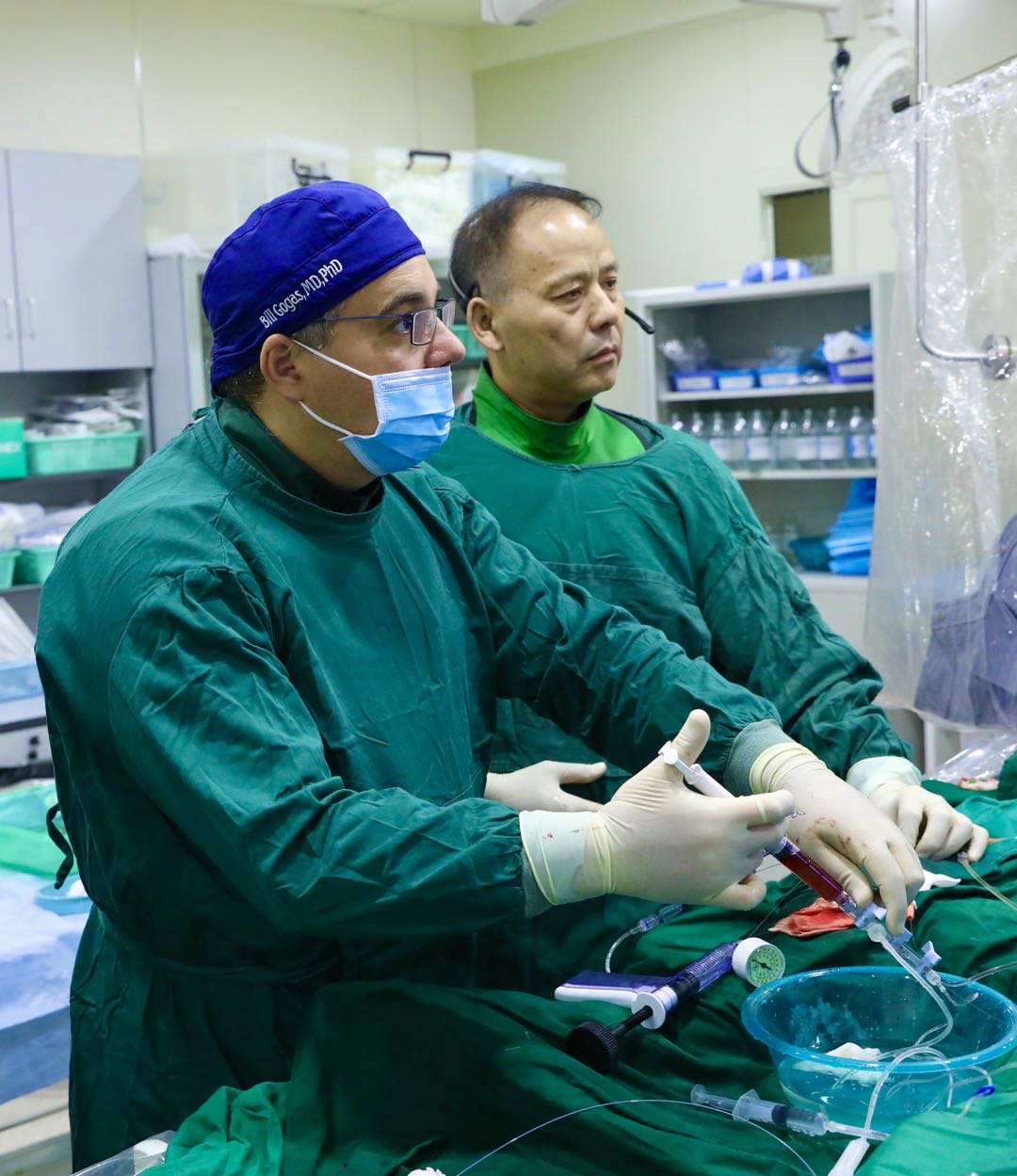
Photo: People's Daily
I returned to China on January 25 after my Christmas holidays, a time that the disease in Wuhan, Hubei province was peaking. There was not a single time that crossed my mind to leave Nanjing. I was present during all the operational days of the Catheterization Laboratory since the outbreak and I will remain present taking care of Chinese patients with all protective measures until the completion of my work agreement. We have performed PCIs on patients with chronic total occlusions, complex distal left main bifurcations using IVUS-guidance as well as diagnostic angiograms in patients who were scheduled for cardiothoracic surgery during the time of the outbreak. There is no question that we will continue to do so fully complying with instructions from local authorities. Among the core values of our profession as interventional cardiologists based on the Hippocratic oath is to serve others in need, and this principle guides me and my colleagues through our entire careers.
Although this outbreak has led to several fatalities within Chinese mainland which are devastating, it’s interesting to point out that another well-known influenza viral infection which hits worldwide annually has led to over 180,000 hospitalizations and 8,000 deaths in the U.S., according to CDC, despite vaccinations. This is also heartbreaking. It is obvious that the world is vulnerable to threats such as viral infections mutating frequently and leading authorities across the globe to work together to guide humanity in the right direction.
The unprecedented protective measures taken by the Chinese authorities to contain the COVID-19 will serve as a perfect example for all countries to see how a large scale crisis is defended. I see the curve showing new infections to have a declining trend. I am sure this crisis will end soon and life will return to normal. I am proud to have been serving, especially through these challenging times for East Asia. I am fully prepared for the 21st century, also known as the Chinese Century.
(The author Bill D. Gogas is a Greek interventional cardiologist of Nanjing First Hospital, Fellow of the American College of Cardiology)


